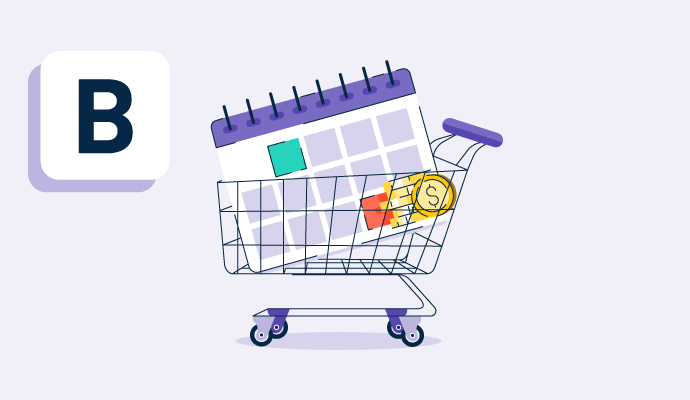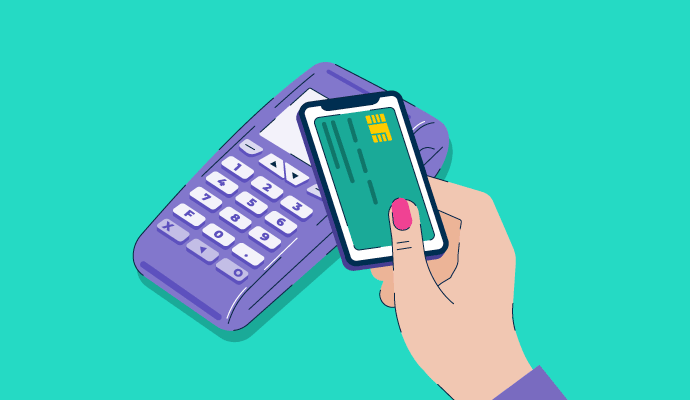What is buy now, pay later (BNPL)?
Buy now, pay later (BNPL) is a type of payment that allows consumers to make purchases and pay for them over time in multiple partial payments (also known as installments).
This form of payment is mainly used for business-to-consumer (B2C) transactions to facilitate the purchasing process. While consumers are in charge of making the payments, the party that provides the BNPL service is responsible for ensuring that sellers get their money from consumers.
Businesses use installment payment and buy now pay later (BNPL) software to offer flexible payment plans to their customers.
Types of buy now, pay later (BNPL)
Depending on what it is being used for, there are two types of BNPL:
- Online and in-store: BNPL is available online through e-commerce websites or shopping carts but can also be provided in stores at checkout.
- Card linked and off card: While BNPL is usually available to anyone approved, some companies only provide it to consumers using branded credit cards.
Benefits of using buy now, pay later (BNPL)
BNPL provides benefits to both sellers and consumers, the most important being:
- Convenience: BNPL helps consumers buy products without paying for them upfront. This allows consumers on a tight budget or those with limited available credit to purchase products they couldn’t afford otherwise.
- Flexibility: BNPL plans typically offer various repayment options, such as weekly, biweekly, or monthly payments.
- Accessibility: BNPL plans are available to consumers with low credit scores who may not be able to obtain a credit card or other forms of financing.
- Customer experience: Offering multiple payment options to consumers may improve their overall experience and loyalty as they are more likely to buy more and often from the same seller.
Impacts of using buy now, pay later (BNPL)
While it helps companies sell more products and services, BNPL can also have negative impacts like the following:
- Overspending: BNPL plans can make it easy for consumers to overspend, especially if they are not careful. Consumers should only use BNPL to make purchases they can afford to repay.
- Late fees: Some BNPL providers charge late fees if consumers miss a payment. These fees can add up quickly and make it challenging to repay the loan.
- Hidden fees: BNPL providers may charge hidden fees for early repayment or payment with a credit card. To avoid paying hidden fees, consumers must carefully read the terms and conditions of any BNPL plan before using it.
Basic elements of buy now, pay later (BNPL)
A complete BNPL offering generally includes the following elements:
- The qualification process through which consumers need to submit personal and financial information to quality for BNPL services.
- The number of installments allows consumers to pay in at least two and a maximum of four installments.
- The value of each installment is the amount to be paid each period, which is predetermined and usually the same each time a payment is made.
- Payment frequency allows consumers to pay in weekly or monthly installments determined at the time of purchase and doesn’t change until full payment is made.
- Penalties for incomplete or late payments are applied when consumers fail to pay an installment or make an incomplete payment, which increases the amount of future payments.
Buy now, pay later (BNPL) best practices
The following best practices can help companies optimally use BNPL:
- Make it easy to use so that consumers can find the BNPL option easily when shopping online and can use it without going through many complicated steps.
- Ensure transparency about hidden fees and penalties for late payments, which may hurt the buyer experience when not communicated and clarified correctly.
- Personalization helps attract and retain consumers by delivering personalized services, such as multi-lingual payment portals or transaction processing in multiple currencies.
Buy now, pay later (BNPL) vs. recurring payments
While recurring payments also refer to monthly payments, these are not limited to a preset number of months, like BNPL.
Recurring payments occur every month until the contract between the customer and the provider ends. This payment type suits SaaS providers like software vendors or service companies. BNPL is a better option for retailers and e-commerce sellers.
Learn more about why you need an e-commerce strategy and how to create an effective one.

Gabriel Gheorghiu
Gabriel’s background includes more than 15 years of experience in all aspects of business software selection and implementation. His research work has involved detailed functional analyses of software vendors from various areas such as ERP, CRM, and HCM. Gheorghiu holds a Bachelor of Arts in business administration from the Academy of Economic Studies in Bucharest (Romania), and a master's degree in territorial project management from Université Paris XII Val de Marne (France).

